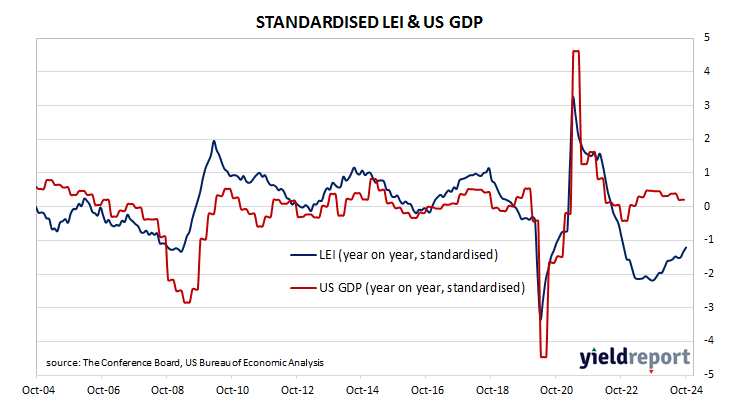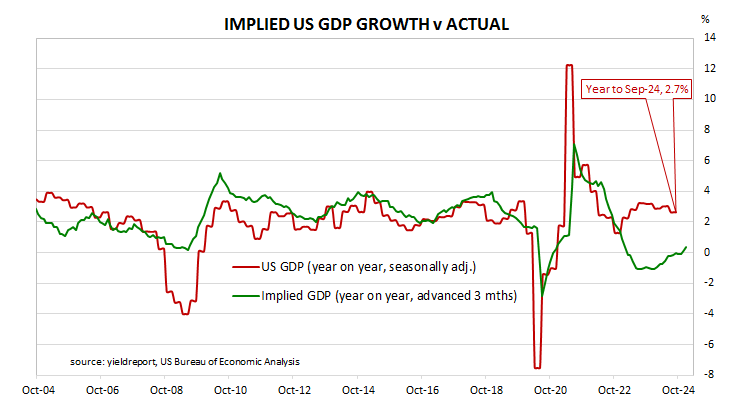Summary: Conference Board leading index down 0.4% in October, fall slightly larger than expected; CB: reading suggest challenges to economic activity ahead; US Treasury yields rise; rate-cut expectations soften; CB: manufacturer new orders largest negative contributor to index decline.
The Conference Board Leading Economic Index (LEI) is a composite index composed of ten sub-indices which are thought to be sensitive to changes in the US economy. The Conference Board describes it as an index which attempts to signal growth peaks and troughs; turning points in the index have historically occurred prior to changes in aggregate economic activity. Readings from March and April of 2020 signalled “a deep US recession” while subsequent readings indicated the US economy would recover rapidly. Post-2022 readings implied US GDP growth rates would turn negative but that has not been the case so far.
The latest reading of the LEI indicates it decreased by 0.4% in October. The fall was a slightly larger one than the 0.3% decline which had been generally expected as well as August’s upwardly-revised 0.3% decrease.
“Apart from possible temporary impacts of hurricanes, the US LEI continued to suggest challenges to economic activity ahead,” said Justyna Zabinska-La Monica of The Conference Board.
US Treasury bond yields generally rose modestly across a slightly flatter curve on the day. By the close of business, the 2-year Treasury yield had gained 3bps to 4.35% while 10-year and 30-year yields both finished 1bps higher at 4.42% and 4.61% respectively.
In terms of US Fed policy, expectations of a lower federal funds rate in the next 12 months softened, although at least another two 25bp cuts are still factored in. At the close of business, contracts implied the effective federal funds rate would average 4.525% in December, 4.435% in January and 4.385% in February. October 2025 contracts implied 3.96%, 62bps less than the current rate.
“The largest negative contributor to the LEI’s decline came from manufacturer new orders, which remained weak in 11 out of 14 industries,” added Zabinska-La Monica. “In October, manufacturing hours worked fell by the most since December 2023, while unemployment insurance claims rose and building permits declined, partly reflecting the impact of hurricanes in the Southeast US. Additionally, the negative yield spread continued to weigh on the LEI.”
Regression analysis suggests the latest reading implies a 0.4% year-on-year growth rate in January, up from the 0.2% year-to-December growth rate after revisions.



